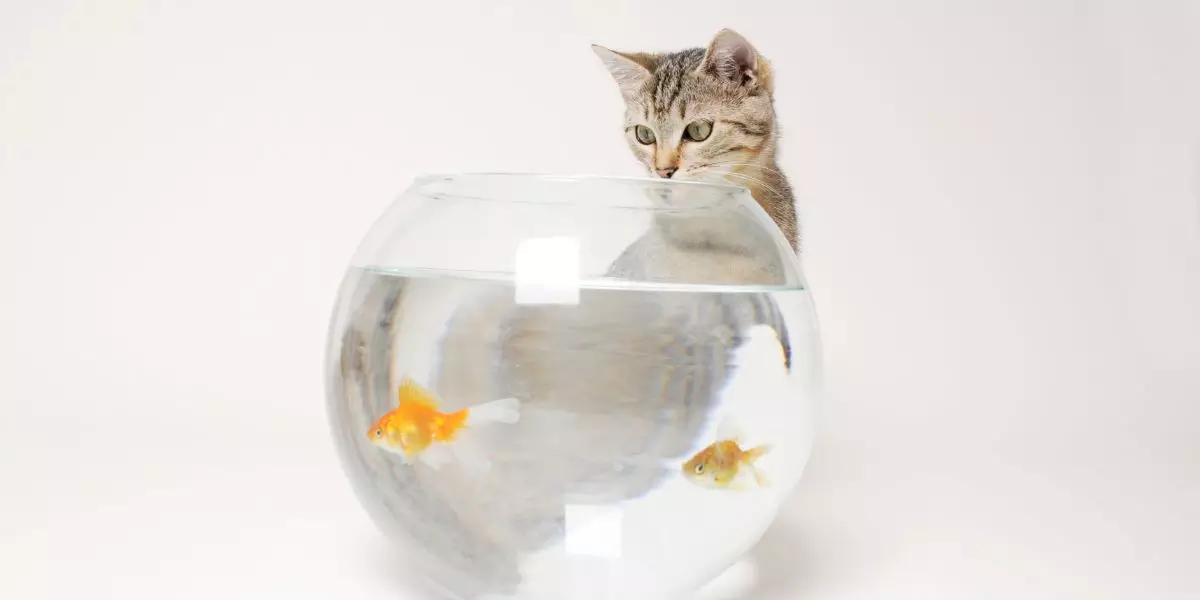In the collective imagination, fish has always been one of cats' favorite dishes. Today, fish is even recommended for feeding cats. But what about the cohabitation between your aquarium fish and your feline player?
Cohabitation between cats and fish is often considered an impossible mission, with a common belief that « cats cannot live peacefully with fish ». However, reality is more nuanced than that. Cats may coexist with fish, provided they take precautions to ensure their safety and monitor their behaviour.
The ideas received:
Unfortunately, there are still many popular ideas on cat and fish cohabitation. The first is that cats are natural predators of fish. In fact, cats have a hunting nature and it is true that they can be tempted to pursue and catch fish. However, it is important to note that all cats are now domesticated, that they are used to being fed and that hunting is no longer a need but an instinct. Their behaviour towards fish can be influenced by their education, age and personality.
Finally, another accepted idea is that cats have no interest in fish and cannot live with them without attacking them. This belief is wrong because cats can find the fish fascinating and stimulating, which can help them relax and entertain themselves. This can also help reduce their stress levels and improve their well-being.
The risks of cohabitation
Although cat and fish cohabitation may be possible, there are risks to consider. First, it is important to note that cats are natural predators and can instinctively view fish as prey. Fish can be stressed by the presence of a cat, which can affect their health and well-being.
In addition, cats can also disrupt the aquarium ecosystem by trying to catch fish or by searching plants. They can also spill the aquarium, which can cause significant material damage and even endanger the lives of the animals found there. It's best to have an aquarium with a closed lid whose opening is not possible for your cat,Aquarium Fluval Edge 46L perhaps an appropriate example for cohabitation.
There is also an electrical risk to your animals, spilling an aquarium that is electrically connected to a pump, heating or lighting can lead to the risk of electrification or electrocution for your cat and fish.
Finally, some cats may have allergic reactions to fish scales or aquarium water. Water from the bin can be toxic to your cats, with waste, food and discards from your fish.
The benefits of this cohabitation
Despite the risks of co-habitation cat and fish, there are advantages of co-habitation. First, the presence of an aquarium can be beneficial to the well-being of the cat. According to a study conducted by the Society for Companion Animal Studies, contemplation of fish in an aquarium can help reduce stress and anxiety in cats, as well as stimulate their curiosity and interest.
In addition, co-habitation cat and fish can also offer benefits for owners. Indeed, the aquarium can be a source of relaxation and visual pleasure for humans, who can entertain themselves by watching fish. In addition, cat and fish cohabitation can also promote the socialization of the cat, providing visual and sensory stimulation, and helping to develop its exploratory behavior.
Unfortunately, cohabitation has no real benefits for fish, they will always take your cat for a predator and only time and habituation will allow your fish to live together.
Finally, it is important to note that co-habitation cat and fish can help raise awareness of the importance of caring for animals and creating healthy environments for them. This can help to encourage a more responsible and respectful attitude towards domestic animals.
Precautions for good cohabitation
To ensure a harmonious coexistence between a cat and fish, it is important to take certain precautions. First, it is recommended to choose an aquarium with a solid lid to prevent the cat from accessing it. The aquarium must be placed in a safe and stable place to prevent it from falling and cause damage to animals or surrounding objects.
It is also advisable to carefully observe the behavior of the cat in the presence of the aquarium. If the cat shows aggressive behavior or approaches the aquarium in a threatening manner, it is best not to continue cohabiting. It may be useful to distract the cat with toys or food to prevent it from focusing on the aquarium or even denying it access to the room in question.
To minimize the risk of allergy or poisoning, it is recommended to clean the aquarium regularly and wash hands after handling fish or aquarium water.
Finally, to ensure the well-being of fish, it is important to offer your fish hiding places so that they feel safe from the cat, opting for an aquarium rich in plants, with decorations containing hiding places.
In conclusion, animals, whether cat or fish, will become accustomed over time to the presence of the other. It is important to take the time at the beginning to observe each other's behaviours to know if cohabitation will be possible.
Conclusion
In short, cohabitation between cat and fish may seem risky, but it is possible to take steps to ensure harmonious and beneficial cohabitation for all. First of all, it is important to recognize the ideas received about this cohabitation and not to take them as absolute truths. Second, it is important to understand the risks to fish and take the necessary precautions to ensure their safety and well-being. Finally, cat and fish cohabitation can provide benefits for animals and humans, such as reduced stress in cats and visual and sensory stimulation.





